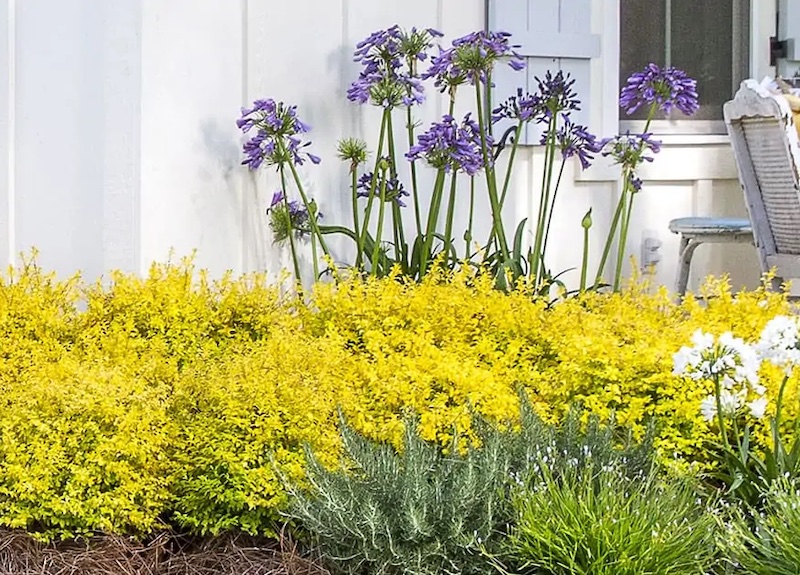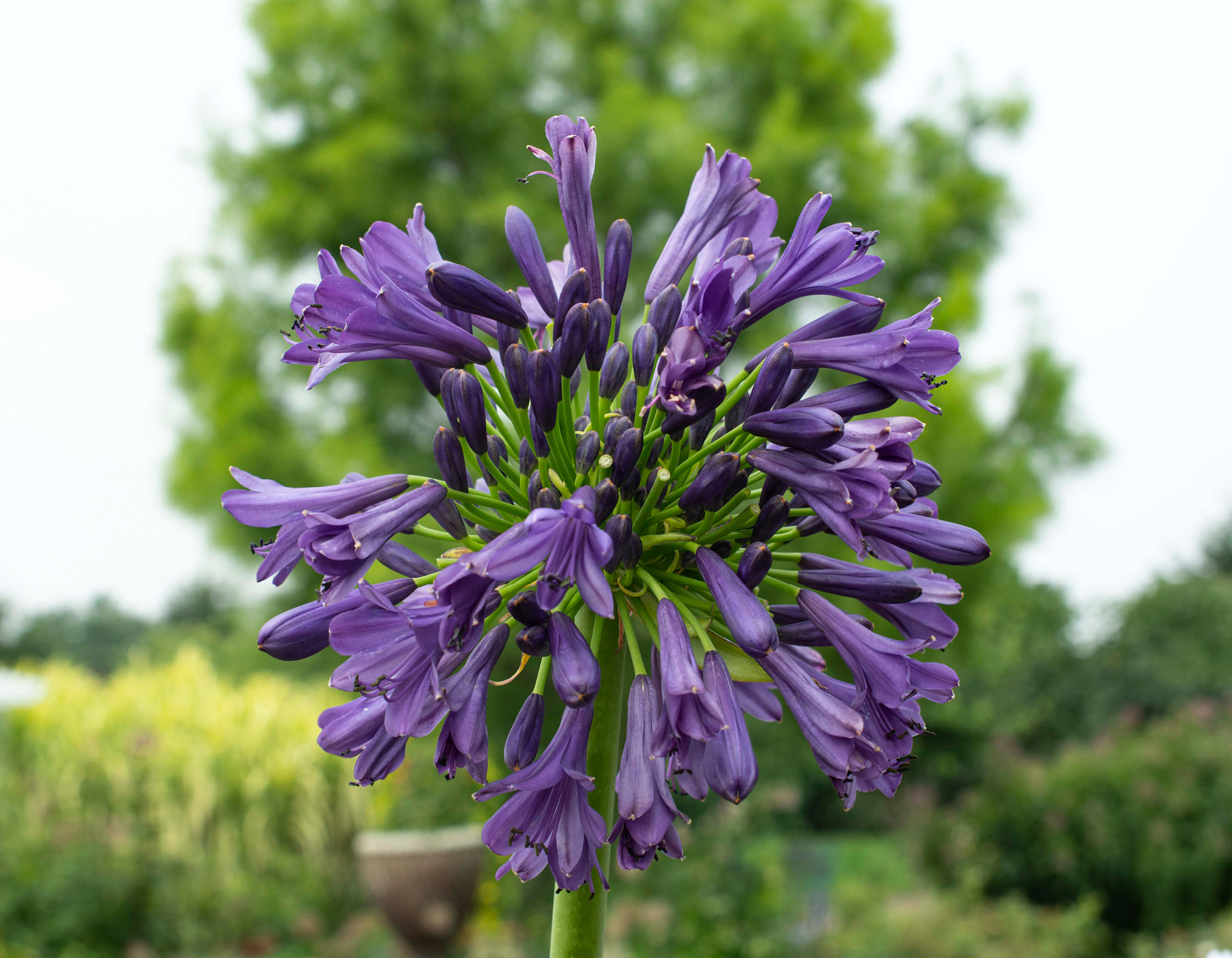Agapanthus Breeding: Tips for Expanding Your Plant Collection
Agapanthus Breeding: Tips for Expanding Your Plant Collection
Blog Article
Understanding the Art of Agapanthus Care: Important Actions for Healthy Growth and Vivid Blossoms
In the realm of gardening, the cultivation of agapanthus stands as a rewarding undertaking for those who seek to nurture these classy flowering plants. From picking the right range to mastering trimming methods, the journey in the direction of growing flourishing agapanthus plants is multifaceted and holds the essential to unlocking the complete possibility of these organic treasures.

Selecting the Right Agapanthus Variety

When choosing the right Agapanthus selection for your garden, consider aspects such as environment viability, blossom shade, and growth practice. Agapanthus, typically called Lily of the Nile or African lily, is available in a variety of colors ranging from shades of blue and purple to white. Pick a blossom color that enhances your existing garden scheme to develop a harmonious landscape. Additionally, think about the environment in your region to guarantee the Agapanthus selection you pick can grow in your details problems. Some selections are extra tolerant of cool temperatures, while others prefer warmer climates. Comprehending the growth habit of various Agapanthus selections is essential for proper positioning within your garden. Some selections have a clumping growth habit, perfect for containers or borders, while others have an even more dispersing nature, appropriate for ground cover or mass plantings. By carefully examining these elements, you can choose the excellent Agapanthus variety to boost the charm of your yard.
Ideal Growing Problems
Considering the ideal ecological demands is necessary for successful Agapanthus cultivation. Agapanthus plants are sensitive to cool temperatures and must be shielded from frost throughout winter months.
To guarantee healthy and balanced growth and vivid blossoms, plant Agapanthus light bulbs at a depth of concerning 2-4 inches and space them 8-12 inches apart. Mulching around the base of the plants aids maintain dampness and subdues weed development.
Watering and Fertilizing Tips
Preserving correct dampness degrees and giving necessary nutrients are crucial elements in the care regimen for Agapanthus plants. It is essential to strike a balance when it comes to watering Agapanthus. These plants favor continually moist dirt however are susceptible to root rot if overwatered. Throughout the growing period, water deeply when a week, guaranteeing the dirt is well-draining to avoid waterlogging. In hotter environments or during durations use this link of dry spell, more regular watering may be necessary to maintain the soil equally moist. Nonetheless, minimize watering in the winter to avoid waterlogged problems.
Fertilizing Agapanthus is vital for advertising healthy growth and prolific blossoms. Apply a balanced plant food, such as a 10-10-10 formula, in the very early springtime as new development emerges. By adhering to these watering and fertilizing ideas, you can ensure your Agapanthus plants thrive and produce vibrant, durable blossoms.
Trimming Methods for Agapanthus
Pruning Agapanthus plants at the appropriate times and with correct techniques is crucial for preserving their wellness and advertising optimum growth and blooming. The excellent time to trim Agapanthus is in late winter or helpful site very early spring prior to brand-new growth emerges.
Deadheading invested blossoms can likewise reroute the plant's power into generating more flowers instead than establishing seeds. If you want to collect seeds for propagation, leave some blossoms to dry and fully grown on the plant.
Bear in mind to make use of tidy, sharp tools to make specific cuts and reduce the danger of presenting diseases. Agapanthus. Normal pruning will aid maintain your Agapanthus looking cool and healthy and balanced while making certain a bountiful display of attractive flowers
Managing Usual Pests and Diseases
After making certain correct pruning techniques for Agapanthus, it is vital to address usual insects and diseases that can influence the wellness and vigor of these plants. One typical parasite that affects Agapanthus is the Agapanthus gall have a peek at these guys midge.
One more typical problem is fungal fallen leave spot, which presents as dark sores on the fallen leaves. To avoid fungal diseases, make sure great air circulation around the plants, avoid overhanging watering, and remove any kind of contaminated leaves quickly. Additionally, Agapanthus plants can experience origin rot if they are planted in poorly draining pipes soil. To stop this, plant Agapanthus in well-draining dirt and prevent overwatering. By being cautious and taking prompt activity versus diseases and insects, you can aid your Agapanthus plants flourish and produce lively flowers.

Conclusion
In final thought, mastering the art of agapanthus treatment includes picking the ideal selection, giving perfect growing problems, proper watering and fertilizing, ideal trimming techniques, and dealing with usual insects and illness. By adhering to these vital steps, you can make sure healthy and balanced growth and vibrant flowers for your agapanthus plants. Remember to frequently keep an eye on and keep your plants to promote their general wellness and long life.
To ensure healthy development and vivid blossoms, plant Agapanthus light bulbs at a deepness of regarding 2-4 inches and area them 8-12 inches apart. By following these watering and feeding tips, you can ensure your Agapanthus plants thrive and create lively, resilient blooms.
One usual parasite that influences Agapanthus is the Agapanthus gall midge. Furthermore, Agapanthus plants can suffer from root rot if they are grown in poorly draining pipes dirt. By following these vital steps, you can guarantee healthy growth and lively blooms for your agapanthus plants.
Report this page